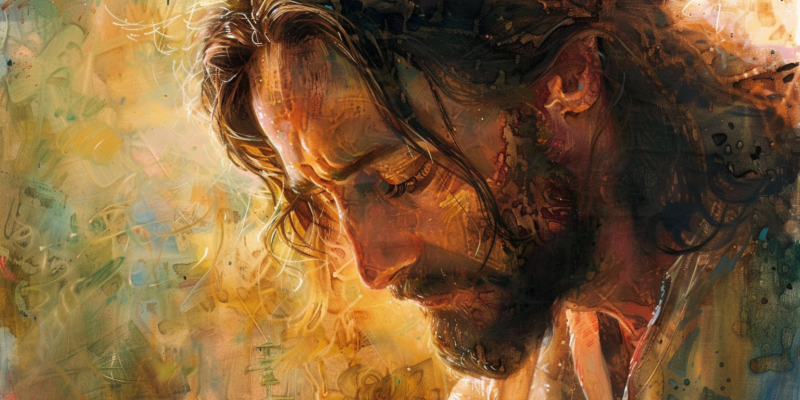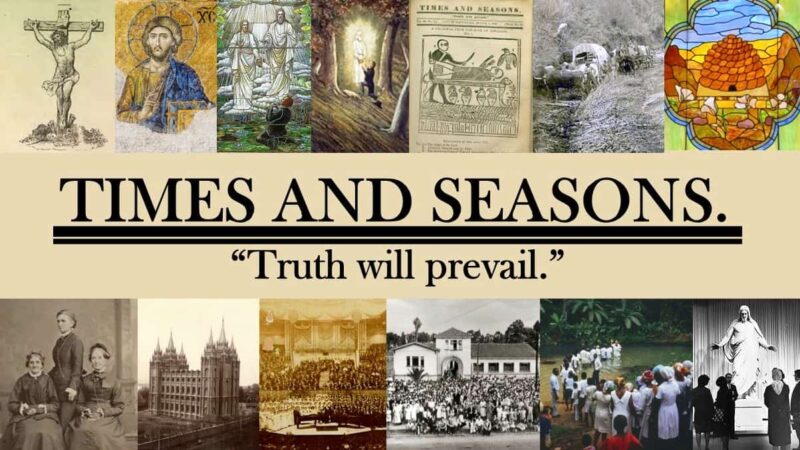 The Come Follow Me lesson for the week ending on April 20th, Easter, takes a break from the section order in the Doctrine and Covenants to focus on how Christ is portrayed in the scripture.
The Come Follow Me lesson for the week ending on April 20th, Easter, takes a break from the section order in the Doctrine and Covenants to focus on how Christ is portrayed in the scripture.
The lesson focuses on three attributes of Christ’s role: His living nature, his gift of the resurrection to all of us, and his atonement. Fortunately, this simplifies finding poems that match the message. As a people, we have not neglected Christ in our poetry. And I’m pleased to point out that the poems for this week are likely not poems that most readers have seen before.
Jesus Christ lives.
The belief in the Living Christ is central to LDS teachings, but for many of us this is an abstract concept, something we understand but might have trouble imagining in practice. The following poem tries to put us in the place of the early Saints, experiencing that He is no longer in the tomb and looking forward to the day when we will meet Him, as did his disciples in Galilee.
Born in England, Lydia Dunford Alder joined the Church during the emigration to Utah with her family, soon after she married George Alder. In Utah she soon became one of the leaders of the suffrage movement there, and her poems appeared frequently in the Woman’s Exponent. After her husband’s death in 1898, she attended the International Council of Women meetings with Emmeline B. Wells, and shortly after served an LDS mission to England, one of the first single women to serve. She passed away in 1923, having lived to see the passage of the 20th amendment.
Come, See the Place
by Lydia D. Alder
- An earthquake rends the shiv’ring ground—
- The angel rolls the stone away,
- Says to the women standing there,
- “Come, see the place where the Lord lay.”
- “He is not here, for he is risen,”
- They hear the snow-white angel say;
- “And fear not, ye who seek the Lord—
- Come, see the place where the Lord lay.”
- “Be not afraid!” his voice assures—
- As prostrate at his feet they pray;
- Then, confident, they gaze within,
- To see the place where the Lord lay.
- O glorious day when Christ declared:
- “See, I am risen from the dead!
- I’ll meet them there in Galilee;
- Go tell my brethren,” Jesus said.
- They saw but angels in the tomb—
- Where lay his feet and where his head,
- But he would be in Galilee—
- “Would meet them there,” his own voice said.
- Lo! he is risen from the dead!
- And thrills each heart this Easter day
- That to the world this truth was shown,
- The tomb was empty where he lay.
1911
Because of Jesus Christ, I will be resurrected.
Closely tied to the living Christ, if not essentially the same idea, is the idea of resurrection. But resurrection implies not just Christ living, but all of us. And in the a final resurrection, Christ Himself will appear. These ideas all cluster together in our poetry, instead of being disjointedly presented as sometimes happens when we teach it. Poetry has the ability to tied together things that we separate in order to try to teach them clearly, emphasizing the interrelated along with a deep understanding.
In the following poem, we experienced the resurrection morning — not the resurrection of Christ, but rather the resurrection of all of us in the final days. The author, Harold Roy Harrison, served an LDS mission in the Southern States, married soon after returning in 1906, and eventually moved to California, where he was the Bishop of the Belvedere Ward. He passed away in 1950.
The Resurrection
by H. R. Harrison
- On the resurrection morning,
- When the trump of God shall sound;
- And those who before were sleeping,
- Will have risen from the ground,
- Then the Saints on earth remaining,
- Those for whom death has no sting,
- Reunited with their loved ones,
- Will await their Lord and King.
- Then the Savior clothed with power,
- Will in fiery clouds appear;
- And he’ll call his own unto him—
- “Those whose names are written there.”
- Earth shall have been cleansed with fire.
- Wickedness and strife shall cease;
- Then will Jesus, for the faithful,
- Usher in the reign of peace.
1914
Jesus Christ accomplished a “perfect atonement” for me.
The lesson has saved the most crucial of Christ’s roles for last. The atonement is the keystone of the plan of salvation—the element without which it would all be for naught. Also an abstract construct, something that has drawn multiple philosophical theories of how it works, we need ways of entering into the concept, of escaping its abstractness so that we can learn how it works in our lives — which we assign to the concept called Repentance.
The following poem illustrates that repentance. The poem describes the feelings of guilt and anguish at past errors, before showing how repentance can ‘clean life’s record.’ The author appears to be Marvin Elmer Pack (1860-1916), of Logan, Utah, who wrote several short stories and poems in the YMMIA magazine, The Contributor.
Life’s Record
by Marvin E. Pack
- I sat one night in the moonlight,
- By the window opened wide,
- Watching the fleecy clouds drift
- Like foam on the ocean’s tide.
- Lost in thought and awed to silence,
- I gazed on the shifting scene,
- And marked the cloud-formed pictures
- Gilded with the moon’s pale sheen.
- And me thought my own life’s story—
- All the hidden, forgotten past,
- Was written there before me,
- In cloud, on cloud deep-massed.
- How I shrank in guilty fear,
- As the accusing scroll unfurled,
- And the secrets of my soul were
- Proclaim’d unto the world!
- And my eyelids drooped in shame,
- As my follies one by one,
- Were traced with relentless pencil—
- All the evil I had done.
- Then I cried aloud in anguish,
- “Can guilt so great as mine
- O! God, claim grace and pardon
- From Thee, the Power divine?”
- To Thee alone for comfort
- Must turn my sin-sick soul,
- For Thou alone canst save me,
- And make me clean and whole!
- And lo! as again I raised
- My shrinking eyes to heaven,
- The gloomy mass of shadows
- Were as by lightning riven.
- The fleecy clouds were drifting
- With a tinge of deeper white,
- And the brush of the angel artist
- Seemed bathed in living light.
- Bright visions of peace and beauty
- Passed before my wondering eyes,
- Chasing the gloomy shadows
- Till Hope lit all the skies.
- * * * * *
- Perchance it was but fancy
- That conjur’d th’ accusing scroll,
- And reflected upon the clouds
- The record of my soul.
- And yet the lesson it teaches
- Is none the less true and real—
- There’s nothing so deeply hidden
- That God’s power can not reveal.
- Oh! may the same bright spirit
- That brushed the shades away
- Yet shine within my heart,
- Aye, unto the perfect day!
- That though my sins be scarlet
- The grace by repentance won
- May yet make clean Life’s Record,
- Through the blood of Christ the Son.
1898
